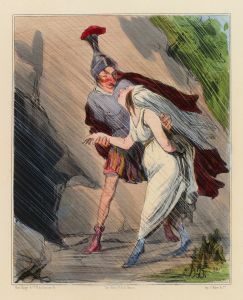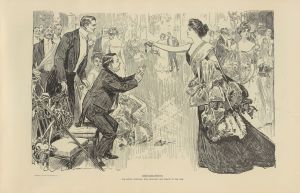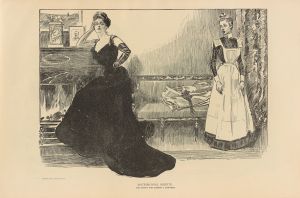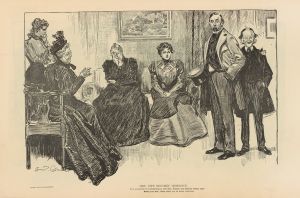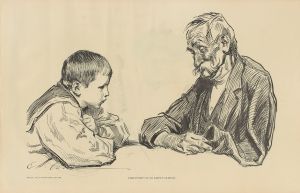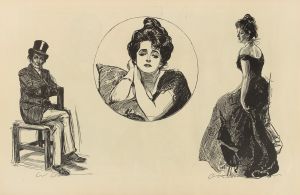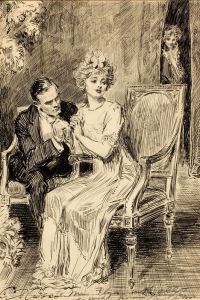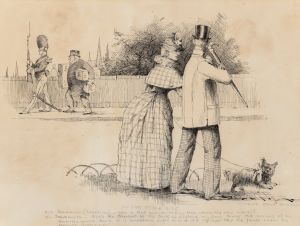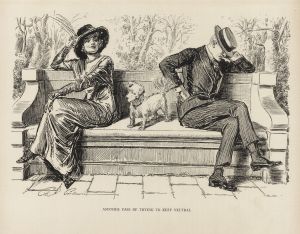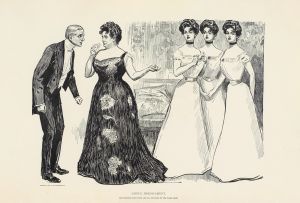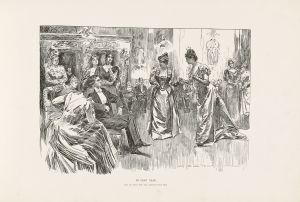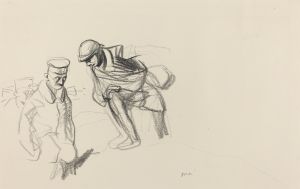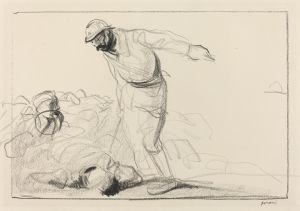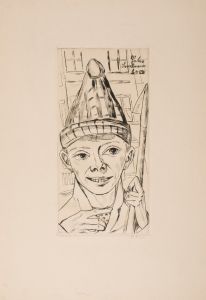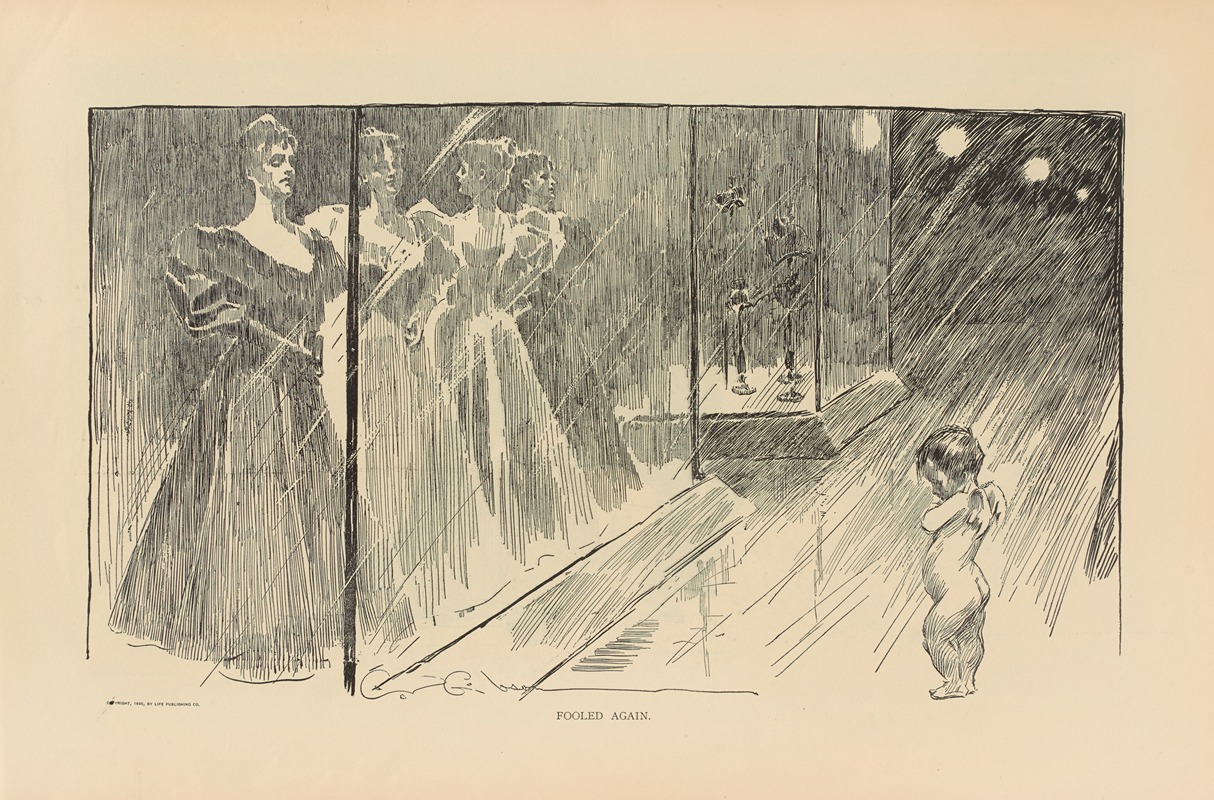
Fooled again
A hand-painted replica of Charles Dana Gibson’s masterpiece Fooled again, meticulously crafted by professional artists to capture the true essence of the original. Each piece is created with museum-quality canvas and rare mineral pigments, carefully painted by experienced artists with delicate brushstrokes and rich, layered colors to perfectly recreate the texture of the original artwork. Unlike machine-printed reproductions, this hand-painted version brings the painting to life, infused with the artist’s emotions and skill in every stroke. Whether for personal collection or home decoration, it instantly elevates the artistic atmosphere of any space.
"Fooled Again" is an illustration by Charles Dana Gibson, an influential American graphic artist best known for his creation of the "Gibson Girl," a representation of the idealized American woman at the turn of the 20th century. Gibson's work was widely published in magazines such as Life, Harper's Weekly, and Scribner's, and his illustrations played a significant role in shaping American popular culture during the late 19th and early 20th centuries.
Charles Dana Gibson was born on September 14, 1867, in Roxbury, Massachusetts. He studied at the Art Students League in New York City, where he honed his skills in pen-and-ink drawing. Gibson's career took off in the 1890s when his illustrations began appearing in prominent publications. His creation of the "Gibson Girl" became a cultural phenomenon, symbolizing the independent and fashionable woman of the era.
"Fooled Again" is one of Gibson's many illustrations that capture the social dynamics and gender roles of his time. While specific details about the publication date and context of "Fooled Again" are not extensively documented, it is consistent with Gibson's style, which often featured sharp wit and social commentary. His illustrations typically depicted scenes of upper-class society, often with a humorous or satirical edge.
Gibson's work, including "Fooled Again," is characterized by its detailed line work and expressive characters. His ability to convey emotion and narrative through simple yet elegant drawings made his illustrations highly popular and influential. The themes in his work often explored the complexities of relationships, societal expectations, and the roles of men and women.
The "Gibson Girl" became an iconic image, representing a blend of beauty, sophistication, and independence. This character often appeared in various scenarios, interacting with male counterparts, and was used to comment on the evolving roles of women in society. While "Fooled Again" does not specifically feature the "Gibson Girl," it reflects Gibson's broader exploration of social themes.
Gibson's influence extended beyond his illustrations. He was a prominent figure in the art world and served as the president of the Society of Illustrators in New York. His work inspired a generation of artists and illustrators, and his style continued to be emulated long after his peak popularity.
Charles Dana Gibson passed away on December 23, 1944, but his legacy endures through his contributions to American art and culture. His illustrations, including "Fooled Again," remain a testament to his skill and insight into the social fabric of his time. Today, Gibson's work is celebrated for its artistic merit and its role in shaping the visual culture of the early 20th century.





